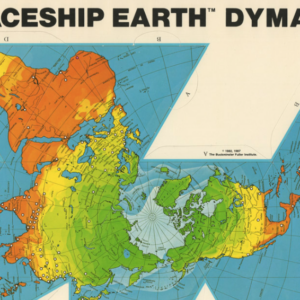R. Buckminster Fuller (1895-1983) was an American scientist, inventor, and polymath. Born in Massachusetts, he went to Harvard in 1913 but soon fell behind and dropped out. During the First World War, Fuller served in the U.S. Navy, where he developed a new winch for lifeboats.
After the war, Fuller started a construction company, which eventually failed and left him deeply depressed and suicidal. For two years, he lived as a recluse, contemplating his life’s purpose and how he could harness his skills and experience to help the human race. Fuller began inventing incredible things based on perceived need. His first great success was the Dymaxion House, a lightweight domicile that could be airlifted to any destination and then be inhabited.
In 1947, Fuller invented his perhaps most important engineering contribution: the geodesic dome. Based on his “synergetic geometry,” the geodesic dome was lightweight and easy to assemble. It enclosed more space than any other structure of similar dimensions and did so without interior support columns. To this day, geodesic domes are used to develop habitats in the harshest conditions, including on the polar caps, the moon, and potentially even for Mars expeditions.
Fuller was renowned for his comprehensive perspective on global issues. Even during his life, he was hailed as one of the greatest minds of our time. Fuller spent more than fifty years developing pioneering solutions to some of the world’s biggest problems, approaching them primarily through design innovation and always aiming to improve the human condition.
Archived
- Out of Stock
- Curiosities - Miscellanea, World
World Energy.
- Buckminster Fuller’s prophetic view of a world defined by its unbalanced energy consumption.
- Read moreQuick View
-
- Out of Stock
- World
The spaceship Earth Dymaxion globe.
- Fuller’s Dymaxion Globe of Spaceship Earth: the most accurate and most revolutionary projection of the world to date.
- Read moreQuick View
-

